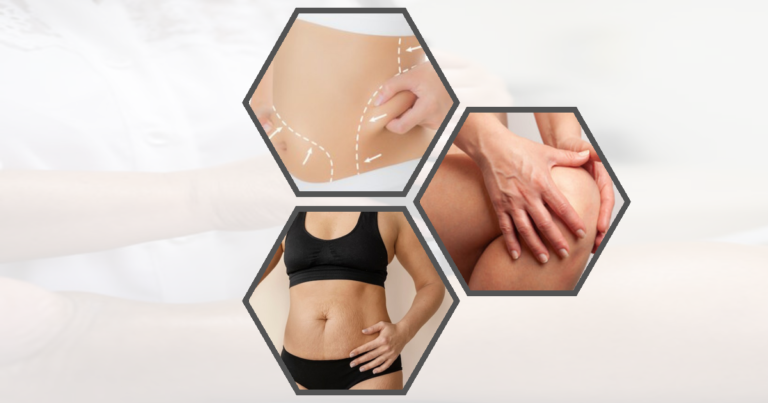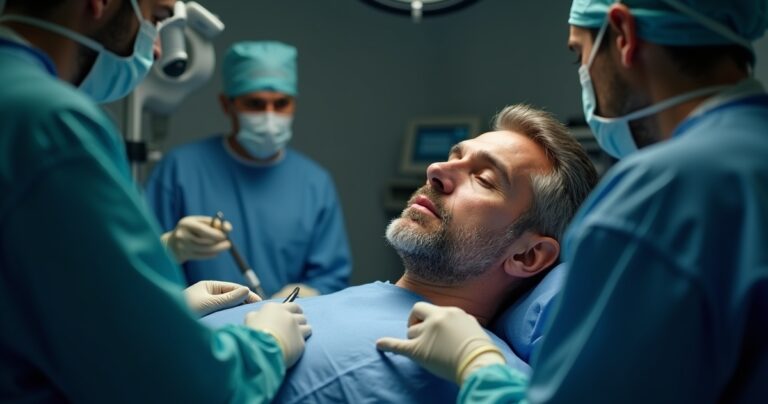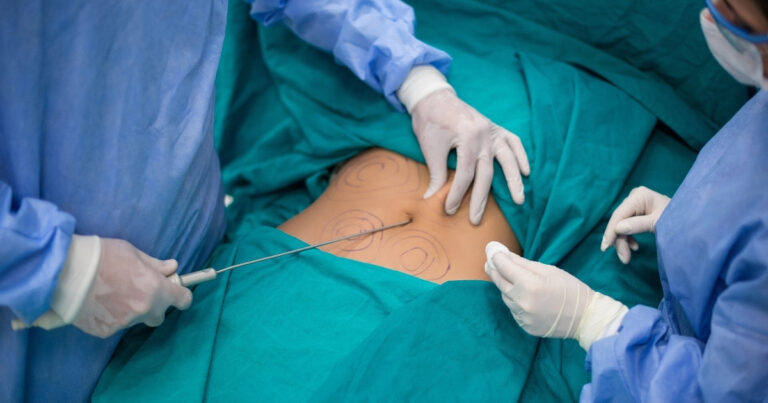Can Nurse Practitioners Perform Liposuction? Understanding the Scope of Practice
Liposuction is a popular cosmetic procedure that removes excess fat from specific areas of the body. As the demand for aesthetic treatments continues to grow, many people wonder if nurse practitioners (NPs) can perform liposuction. This comprehensive guide explores the legal, regulatory, and practical aspects of NPs performing liposuction procedures.
Can NP Do Liposuction: Legal and Regulatory Considerations
The ability of nurse practitioners to perform liposuction varies depending on state regulations and scope of practice laws. While some states allow NPs to perform certain cosmetic procedures, others have stricter limitations.
State-by-State Regulations on NP Scope of Practice
Each state has its own set of regulations governing the scope of practice for nurse practitioners. Some states grant NPs full practice authority, allowing them to perform a wide range of medical procedures independently. Other states require NPs to work under the supervision of a physician.
In states with full practice authority, NPs may have more opportunities to perform cosmetic procedures like liposuction. However, even in these states, additional training and certification may be required.
Supervision Requirements for NPs in Cosmetic Procedures
Many states require NPs to work under the supervision of a licensed physician when performing invasive cosmetic procedures such as liposuction. This supervision can range from direct oversight to a collaborative agreement between the NP and the supervising physician.
- Direct supervision: The physician must be physically present during the procedure
- Indirect supervision: The physician must be available for consultation but not necessarily on-site
- Collaborative agreement: The NP and physician work together to establish protocols and guidelines for patient care
It’s essential for NPs interested in performing liposuction to thoroughly research their state’s specific requirements and consult with their state board of nursing for guidance.
Training and Certification for NPs in Liposuction
To perform liposuction safely and effectively, NPs must undergo extensive training and certification beyond their initial nursing education.
Required Medical Education for Liposuction Providers
NPs interested in performing liposuction typically need to complete the following educational requirements:
- Master’s or Doctoral degree in nursing
- Advanced practice registered nurse (APRN) licensure
- Board certification in a relevant specialty (e.g., family practice, adult-gerontology)
- Additional training in aesthetic medicine and liposuction techniques
Specialized Cosmetic Procedure Training Programs
Several organizations offer specialized training programs for healthcare professionals interested in performing cosmetic procedures, including liposuction. These programs may include:
- Hands-on training workshops
- Didactic lectures on anatomy, physiology, and surgical techniques
- Supervised clinical experience
- Certification exams
Dr. Alexandre, a renowned expert in aesthetic medicine, emphasizes the importance of comprehensive training: “NPs interested in performing liposuction must invest in rigorous education and hands-on experience to ensure patient safety and optimal outcomes.”
Types of Liposuction Procedures NPs May Perform
Depending on their training and state regulations, NPs may be able to perform various types of liposuction procedures.
Tumescent Liposuction Technique
Tumescent liposuction is one of the most common techniques used in fat removal procedures. This method involves injecting a solution of saline, local anesthetic, and epinephrine into the treatment area before suctioning out the fat.
Benefits of tumescent liposuction:
- Reduced blood loss
- Minimal postoperative pain
- Faster recovery time
Laser-Assisted Liposuction (LAL)
Laser-assisted liposuction uses laser energy to liquefy fat cells before they are removed. This technique may be suitable for NPs with appropriate training and certification.
Advantages of laser-assisted liposuction:
- Less invasive than traditional liposuction
- Potential for skin tightening effects
- Shorter recovery period
NPs must carefully consider their training, experience, and state regulations when deciding which liposuction techniques to offer.
Safety Considerations for NP-Performed Liposuction
Patient safety is paramount in any medical procedure, including liposuction performed by nurse practitioners.
Patient Selection and Contraindications
Proper patient selection is crucial for ensuring safe and successful liposuction outcomes. NPs must carefully evaluate potential candidates and consider contraindications, such as:
- Obesity
- Uncontrolled diabetes
- Heart disease
- Blood clotting disorders
- Pregnancy
Dr. Alexandre notes, “Thorough patient assessment and adherence to strict selection criteria are essential for minimizing risks and achieving optimal results in liposuction procedures.”
Anesthesia Options and Risks
The choice of anesthesia for liposuction procedures depends on various factors, including the extent of the treatment area and patient preferences. NPs must be well-versed in anesthesia options and associated risks:
- Local anesthesia
- Conscious sedation
- General anesthesia
Each anesthesia option carries its own set of risks and benefits, which must be carefully explained to patients during the consultation process.
Comparing NP and Plastic Surgeon Liposuction Outcomes
When considering whether NPs can perform liposuction, it’s important to compare outcomes with those of plastic surgeons.
Success Rates and Patient Satisfaction
Studies have shown that properly trained NPs can achieve comparable success rates and patient satisfaction levels to plastic surgeons in certain cosmetic procedures. However, more research is needed specifically on liposuction outcomes.
Factors influencing patient satisfaction:
- Provider experience and skill
- Realistic expectations
- Postoperative care and follow-up
Complication Rates and Risk Factors
Complication rates for NP-performed liposuction may vary depending on factors such as:
- Provider training and experience
- Patient selection criteria
- Adherence to safety protocols
It’s essential for patients to thoroughly research their provider’s qualifications and track record before undergoing any cosmetic procedure.
The Role of NPs in Medical Spas and Aesthetic Practices
Nurse practitioners are playing an increasingly important role in medical spas and aesthetic practices across the country.
Expanding Scope of Practice in Cosmetic Treatments
As the demand for cosmetic treatments continues to grow, many NPs are expanding their scope of practice to include various aesthetic procedures. This expansion may include:
- Non-invasive treatments (e.g., laser therapy, chemical peels)
- Minimally invasive procedures (e.g., injectables, thread lifts)
- More advanced treatments (e.g., liposuction, depending on state regulations)
Collaboration with Physicians in Aesthetic Medicine
Many NPs work collaboratively with physicians in aesthetic practices, combining their skills and expertise to provide comprehensive patient care. This collaboration can take various forms:
- Shared patient consultations
- Joint treatment planning
- Ongoing education and skill-sharing
Dr. Alexandre emphasizes the importance of teamwork in aesthetic medicine: “The collaboration between NPs and physicians can lead to improved patient outcomes and a more well-rounded approach to cosmetic treatments.”
Cost Comparison: NP vs Plastic Surgeon Liposuction
When considering liposuction, cost is often a significant factor for patients. The price of the procedure can vary depending on the provider’s qualifications and experience.
Average Pricing for Different Liposuction Techniques
Liposuction costs can vary widely based on factors such as:
- Geographic location
- Provider experience
- Type of liposuction technique used
- Number of treatment areas
|
Provider Type |
Average Cost Range |
|
NP |
,500 – ,000 |
|
Plastic Surgeon |
,500 – ,000 |
Note: These are general estimates and may vary significantly based on individual cases and providers.
Insurance Coverage for NP-Performed Procedures
Most insurance plans do not cover liposuction when performed for cosmetic reasons, regardless of whether an NP or plastic surgeon performs the procedure. However, in some cases where liposuction is deemed medically necessary (e.g., to treat lipedema), insurance may provide coverage.
Patients should:
- Check with their insurance provider for specific coverage details
- Inquire about financing options offered by the aesthetic practice
Finding a Qualified NP for Liposuction
For patients considering liposuction performed by an NP, it’s crucial to find a qualified and experienced provider.
Researching Provider Credentials and Experience
When searching for an NP to perform liposuction, patients should:
- Verify the NP’s state licensure and certifications
- Check for specialized training in liposuction techniques
- Review before-and-after photos of previous patients
- Read patient reviews and testimonials
- Inquire about the NP’s experience with specific liposuction techniques
Questions to Ask Before Scheduling a Procedure
Patients should prepare a list of questions to ask during their consultation, such as:
- How many liposuction procedures have you performed?
- What type of liposuction technique do you recommend for my case?
- What are the potential risks and complications?
- What is the expected recovery time?
- Will I need to take time off work?
- Are there any pre-procedure preparations I should follow?
Risks and Benefits of NP-Performed Liposuction
As with any medical procedure, NP-performed liposuction carries both risks and benefits that patients should carefully consider.
Potential Complications and Side Effects
While complications from liposuction are relatively rare when performed by qualified providers, patients should be aware of potential risks, including:
- Infection
- Bleeding or hematoma formation
- Contour irregularities
- Numbness or changes in skin sensation
- Adverse reactions to anesthesia
Advantages of Choosing an NP for Liposuction
There can be several benefits to choosing an NP for liposuction, such as:
- Potentially lower costs compared to plastic surgeons
- More personalized care and attention
- Shorter wait times for appointments
- Holistic approach to patient care
However, patients must weigh these advantages against the NP’s experience and qualifications in performing liposuction. Liposuction paradox weight happens when people gain weight after fat removal surgery The body tries to replace lost fat cells in other areas causing unexpected weight gain Lymphedema liposuction potential offers hope for reducing swelling in arms and legs This special surgery might help remove extra fluid and fat to make limbs smaller and more comfortable
Chin lipo beverages are special drinks that claim to help reduce fat under the chin These drinks are marketed as a way to get a slimmer jawline without surgery UAE cosmetic surgery offers many beauty treatments to help people look and feel better Patients from around the world visit
Liposuction cellulite consequences Removing fat through liposuction might not always fix cellulite and can sometimes make the skin look more uneven Liposuction scars fade over time as your body heals The small marks from the procedure become less noticeable with proper care
Future Trends in NP Involvement in Cosmetic Procedures
The role of nurse practitioners in cosmetic procedures, including liposuction, is likely to continue evolving in the coming years.
Evolving Regulations and Scope of Practice
As the demand for cosmetic procedures grows, some states may consider expanding NP scope of practice to include more advanced treatments like liposuction. This could involve:
- Updated licensing requirements
- Specialized certifications for cosmetic procedures
- Expanded collaborative agreements with physicians
Advancements in Non-Invasive Fat Reduction Techniques
The field of aesthetic medicine is constantly evolving, with new non-invasive fat reduction techniques emerging. NPs may play a significant role in adopting and performing these procedures, which could include:
- Cryolipolysis (fat freezing)
- Radiofrequency-assisted lipolysis
- Ultrasound-assisted fat reduction
As these technologies advance, the line between surgical and non-surgical fat reduction may become increasingly blurred, potentially expanding opportunities for NPs in the field of body contouring.
FAQ’s
Can a nurse practitioner do cosmetic procedures?
Yes, nurse practitioners can perform certain cosmetic procedures, depending on their training, certification, and state regulations. Many NPs are qualified to administer injectables like Botox and dermal fillers, as well as perform non-invasive treatments such as chemical peels and laser hair removal. However, more invasive procedures like liposuction may require additional training and certification.
What qualifications are needed to perform liposuction?
To perform liposuction, healthcare providers typically need a medical degree (MD, DO, or in some cases, APRN), specialized training in cosmetic surgery or aesthetic medicine, and certification in liposuction techniques. Additionally, they must be licensed to practice in their state and adhere to all relevant regulations regarding scope of practice.
Is liposuction considered plastic surgery?
Liposuction is generally considered a type of plastic surgery, as it involves altering the body’s appearance through surgical means. However, it’s important to note that not all providers who perform liposuction are board-certified plastic surgeons. Some dermatologists, cosmetic surgeons, and in some cases, properly trained nurse practitioners may also offer liposuction services.
How long does it take to recover from NP-performed liposuction?
Recovery time from NP-performed liposuction is typically similar to that of procedures performed by other qualified providers. Most patients can return to work within a few days to a week, depending on the extent of the procedure and the areas treated. Full recovery, including the resolution of swelling and bruising, may take several weeks to a few months.








